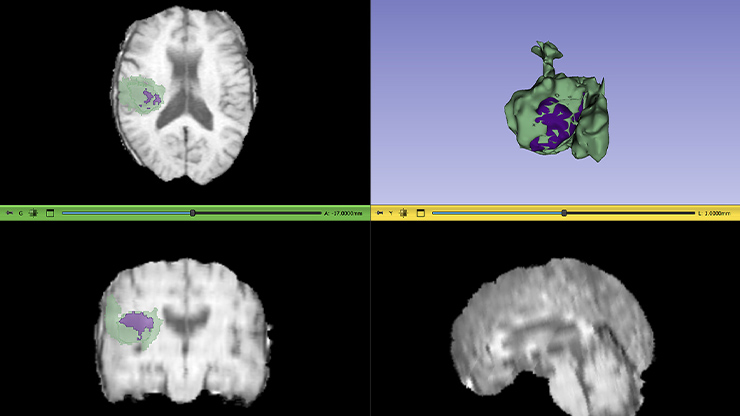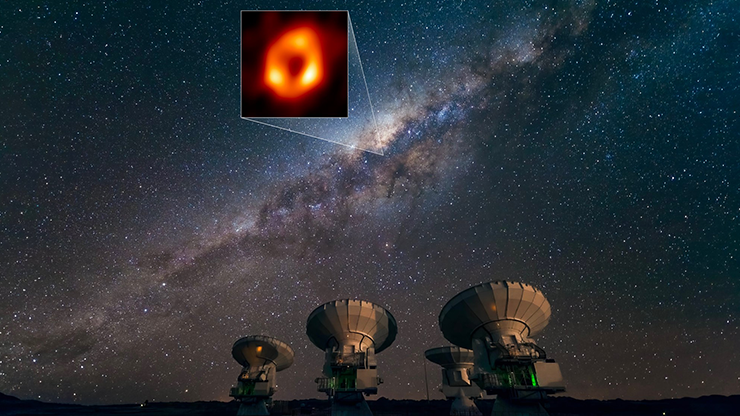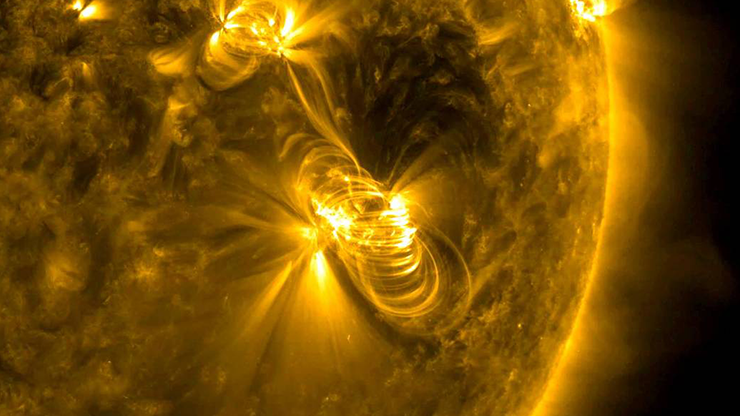Computational Topology to Find Exoplanet Signatures in Astronomical Images
In astronomical images of circumstellar disks—the accretion disks of developing stellar systems—it is often possible to see structures such as rings, gaps, and lumps that signify the dynamics of exoplanet formation. Mathematical techniques in persistent homology, a method that falls under the umbrella of topological data analysis (TDA), can contribute to finding these structures.

“Recent studies of the sky have revealed exoplanets in formation in nearly all circumstellar disks,” Elizabeth Bradley of the University of Colorado Boulder and Santa Fe Institute said. “Our overall goal is to characterize the structures of these disks, and find exoplanets in them.” During a contributed presentation at the 2025 SIAM Conference on Applications of Dynamical Systems, which was held last week in Denver, Colo., Bradley presented joint work with Morgan Byers and James Meiss of the University of Colorado Boulder and Jay Chittidi and Meredith MacGregor of Johns Hopkins University on the development of mathematical approaches to enhance the characterization of exoplanet signatures.
Bradley and her collaborators specifically worked with data from the Atacama Large Millimeter/submillimeter Array (ALMA), a radio interferometer consisting of 66 dish antennas that take measurements in radio wavelengths from which astronomical images can be reconstructed. This process creates structured artifacts in the observations, and there is also the regular noise in the data. Researchers within the radio astronomy community typically use the CLEAN algorithm to create usable images from this data, which requires skill and lots of decision-making for the free parameters — and thus a lot of time per image.
“It turns out that topological data analysis can help with this,” Bradley said. For TDA-based denoising of the ALMA images, the collaborators first needed to address the fact that the images were grayscale, not a binary black and white; simply applying a threshold to create a black-and-white delineation did not work due to the difference in brightness between the star and surrounding disk. “We handle this issue with a classic computer vision technique to pull out and throw out the star,” Bradley said, specifying that they used Otsu’s method.
The next step in the researchers’ approach, which they termed CDH++, was to use the Chung-Day-Hu persistent homology algorithm [1] on a series of ALMA images that were binarized with a range of threshold values, and then merge the results (see Figure 1). Ultimately, this TDA-based method performed better than CLEAN while only requiring several seconds of unsupervised computer time, rather than tens of minutes of human labor.
Another TDA technique that can help characterize structures potentially indicating the presence of exoplanets is Canny edge detection, which smooths the image, computes a numerical gradient, and does some gymnastics with two different thresholds to pick up the edges in the image. This procedure was quite adept at identifying structures in the ALMA images, providing a look at the center of the disk closer to the star where it is much more difficult to detect exoplanets. “This approach pulled out things from the center that were very interesting to our astronomy collaborators,” Bradley said.
Given that there is no ground truth—there is no other way to look at these stellar systems besides via telescope—how is it possible to know whether these results are correct? One tactic to test the approach is to make up a synthetic stellar system, and use a tool called simobserve to see what it would look like if it were to be observed on ALMA. “This tool knows how to mess up the image in the way that the telescope would,” Bradley said. The researchers used their method on the synthetic data from ALMA, cleaning it up with CDH++ and then undertaking Canny edge detection, and compared the results to the original synthetic stellar system.

Carrying out these methods in tandem with existing practices—i.e., applying CLEAN, then CDH++, then Canny—can identify even more structure in the images (see Figure 2). “We can look at regions where it is almost impossible to find exoplanet signatures by eye,” Bradley said.
To conclude, Bradley affirmed that TDA can help solve important problems in astrophysics, both removing interferometry artifacts from ALMA data without intense user effort and finding relevant structures to address scientific questions. “This approach not only outperforms the current state of the art, but also takes humans out of the loop,” Bradley said. While these are preliminary results and there is still more work to do, these methods should ultimately contribute to advancing the understanding of stellar system formation.
References
[1] Chung, Y.-M., Day, S., & Hu, C.-S. (2022). A multi-parameter persistence framework for mathematical morphology. Sci. Rep., 12, 6427.
About the Author
Jillian Kunze
Master's student, Drexel University
Jillian Kunze is the former associate editor of SIAM News. She is currently a master’s student in data science at Drexel University.

Stay Up-to-Date with Email Alerts
Sign up for our monthly newsletter and emails about other topics of your choosing.






